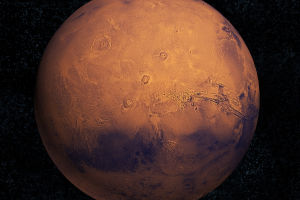Astronomers have observed that the U.S. "Double Asteroid Redirection Test (DART)" spacecraft "deliberately" struck a near-Earth asteroid last month. The debris, dust, and other substances produced by it form a comet-tail-like scene that stretches for nearly 10,000 kilometers in space.
According to the Associated Press report on the 4th, two days after the DART spacecraft hit the asteroid, researchers used the Southern Astrophysical Research Telescope in Chile to capture the above scene. Related pictures show that the asteroid is a point of light, followed by a long, bright "coma tail". This "hui tail" stretches for more than 9,600 kilometers.
Matthew Knight, a researcher involved in the observations, said most of the "comet tail" material was being accelerated away from the asteroid by solar radiation. The researchers expect that this "wisdom tail" will grow longer and more scattered, and eventually become so thin that it is completely undetectable.
By then, Knight said, the material will be wafting through the solar system like other dust. Researchers will continue to observe to understand the amount and composition of the material produced by the impact.
The DART spacecraft struck a near-Earth asteroid on Sept. 26 in an attempt to change its orbit. This is the smaller asteroid in a near-Earth binary asteroid system, with a diameter of about 160 meters and a distance of about 11 million kilometers from Earth.
The DART spacecraft was traveling at about 22,530 kilometers per hour at the time of the impact. Whether the impact changed the asteroid's orbit remains to be determined by researchers.
"We're starting a new era of humanity. In this era, we may have the ability to protect ourselves from dangerous asteroid impacts," said Lori Graz, director of NASA's Planetary Science Division. "It's an amazing thing. We've never had this capability before."
About 66 million years ago, an asteroid smashed into the earth, and the dinosaurs could not be avoided, and eventually went extinct. And today, if another asteroid representing the end of the world flies to the earth, this impact proves that human beings may have the ability to change their fate of being destroyed.
According to reports, "Dimophos" orbits a larger asteroid "Didymos" with a diameter of 780 meters, with an orbital period of about 11 hours and 55 minutes. Neither poses a threat to Earth, but they became experimental subjects for NASA's mission to change the orbit of Dimovers.
The mission was NASA's first full-scale demonstration of its deflection technology that could protect Earth. The first such mission, DART, aims to determine whether the technology can one day protect Earth from bad luck by deflecting a near-Earth asteroid or comet by a spacecraft's kinetic energy impact.
"For the first time, we can measurably alter the orbits of objects in the universe," said Robert Braun, head of the Space Exploration Unit at the Johns Hopkins University Applied Physics Laboratory.
"There are many ideas for this mission that will teach us how to one day protect our planet from asteroids," said NASA Administrator Bill Nelson. "We're proving that planetary defense is a global endeavor and has the potential to save our planet."


